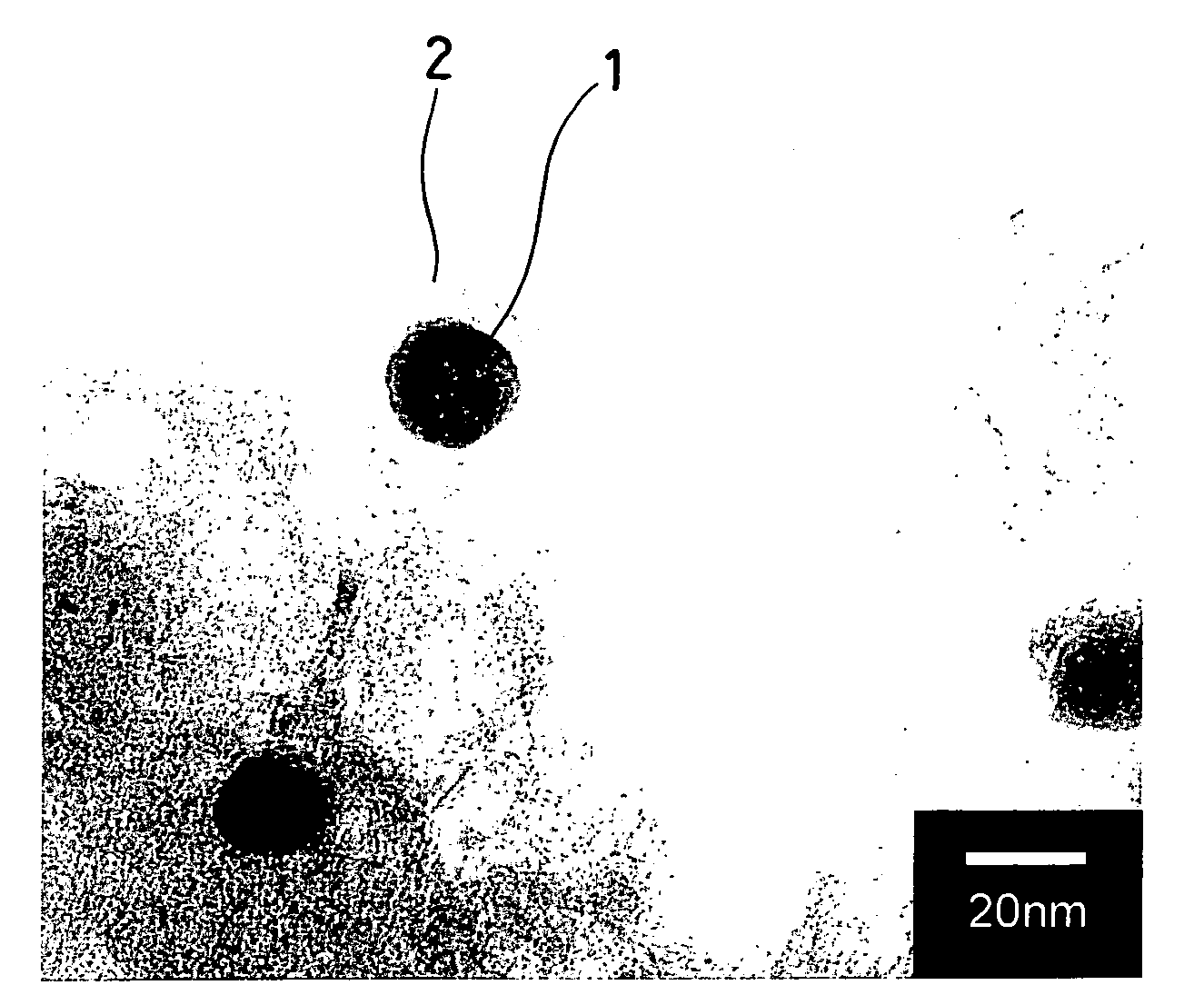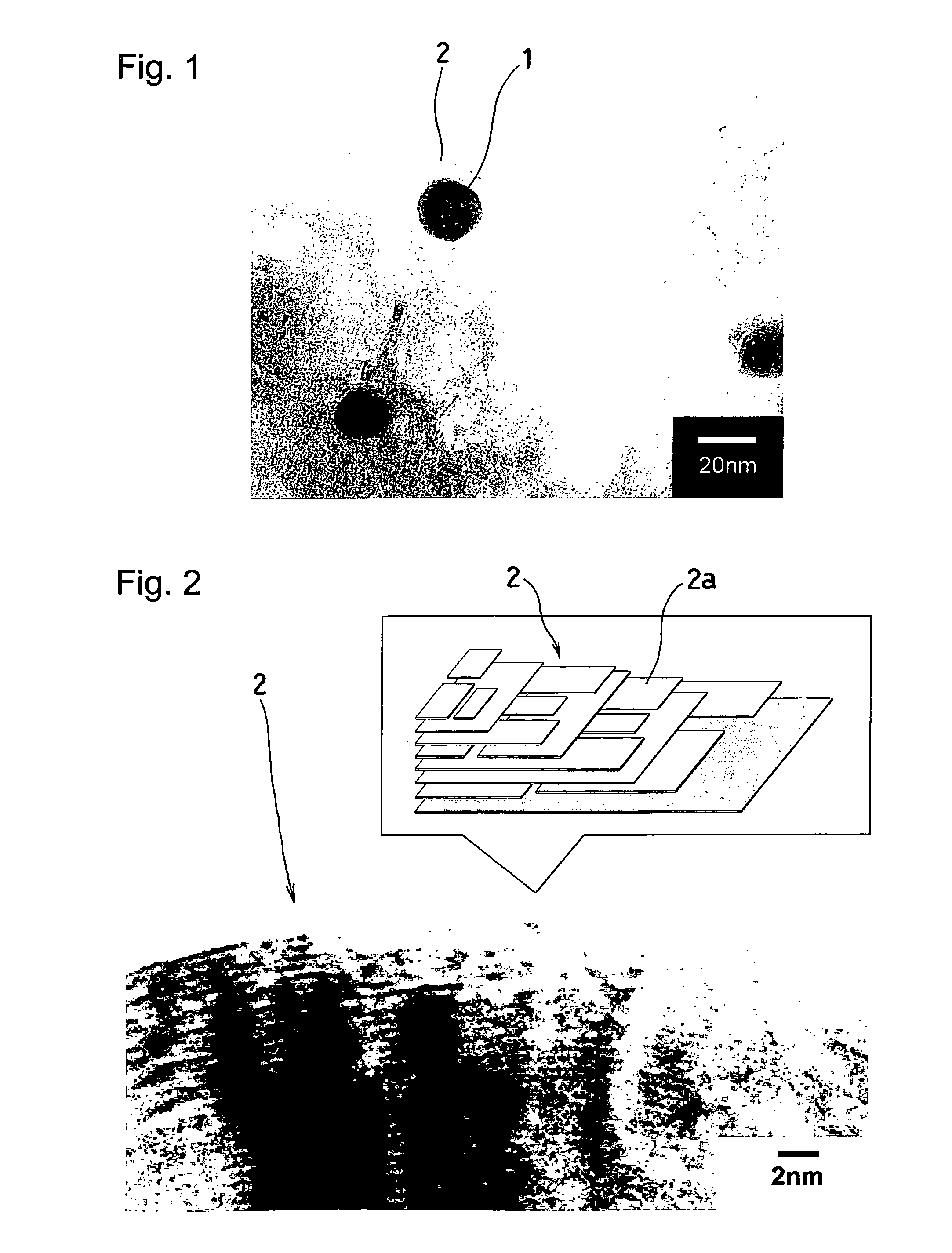Electrode catalyst for fuel cell and fuel cell using the same
a fuel cell and electrode catalyst technology, applied in the direction of cell components, electrochemical generators, lead-acid accumulators, etc., can solve the problems of increasing the cost of electrode catalyst in a cell module, increasing the cost of electrode catalyst, and reducing the catalytic performance due to sintering or elution of the catalyst, so as to reduce the amount of precious metal catalyst use
- Summary
- Abstract
- Description
- Claims
- Application Information
AI Technical Summary
Benefits of technology
Problems solved by technology
Method used
Image
Examples
embodiment 1
[0040]Firstly, an iron carbon complex is prepared by mixing ferrocene with furfuryl alcohol (hereafter, abbreviated to FA) and carbonizing the mixture. For this purpose, poly (furfuryl alcohol) (hereafter, abbreviated to PFA) containing ferrocene is prepared by dissolving ferrocene corresponding to 1 to 3 wt % on the iron atom basis in FA, adding hydrochloric acid (2 mol / dm3) as a polymerization initiator thereto, and then polymerizing them at 70° C. for 48 hours in the air. Following this, PFA is heated up to 700° C. at a programming rate of 150° C. / h in an atmosphere of helium circulation, and then PFA is maintained in this state for an hour to be carbonized.
[0041]FIG. 1 shows a part of a TEM image of a carbonized state of the iron carbon complex observed by a transmission electron microscope, and it is possible to confirm from this image that a random layer 2 of a structure analogous to graphite developed into an onion-like lamination has been produced around a nano-order (nm) mi...
embodiment 2
[0057]Next, an example of having prepared an iron carbon complex by using brown coal will be described below.
[0058]In this embodiment, the particle diameters were arranged to 2 to 5.6 mm, and Loy Yang coal (hereafter, abbreviated to LY) which was from Australia and stored in the air was used as a coal sample. This LY coal had 41.8% water, 63.9% carbon, 4.8% hydrogen, 0.6% nitrogen, and 30.7% Odiff by weight, respectively.
[0059]The above-mentioned LY coal was made to carry 0 to 10 wt % Fe (NO3)3.9H2O of iron atomic basis from its water solution as an iron catalyst by an impregnation method. The carbonization was carried out by heating the sample up to 1000° C. at a temperature rising rate of 150° C. / min in the atmosphere of helium, and keeping it at the temperature for an hour.
[0060]The structure of the iron carbon complex obtained was examined by X-ray diffraction measurement and observation through a transmission electron microscope. Cu—Kα rays were used for the XRD measurement. Th...
PUM
| Property | Measurement | Unit |
|---|---|---|
| current | aaaaa | aaaaa |
| voltage | aaaaa | aaaaa |
| voltage | aaaaa | aaaaa |
Abstract
Description
Claims
Application Information
 Login to view more
Login to view more - R&D Engineer
- R&D Manager
- IP Professional
- Industry Leading Data Capabilities
- Powerful AI technology
- Patent DNA Extraction
Browse by: Latest US Patents, China's latest patents, Technical Efficacy Thesaurus, Application Domain, Technology Topic.
© 2024 PatSnap. All rights reserved.Legal|Privacy policy|Modern Slavery Act Transparency Statement|Sitemap



